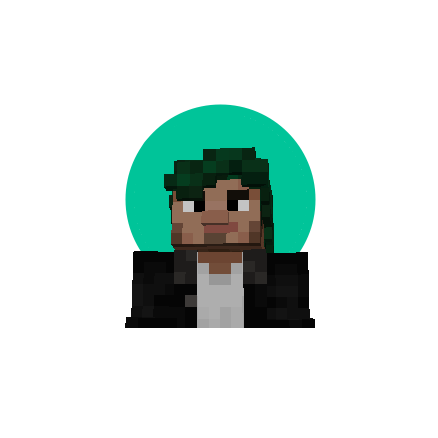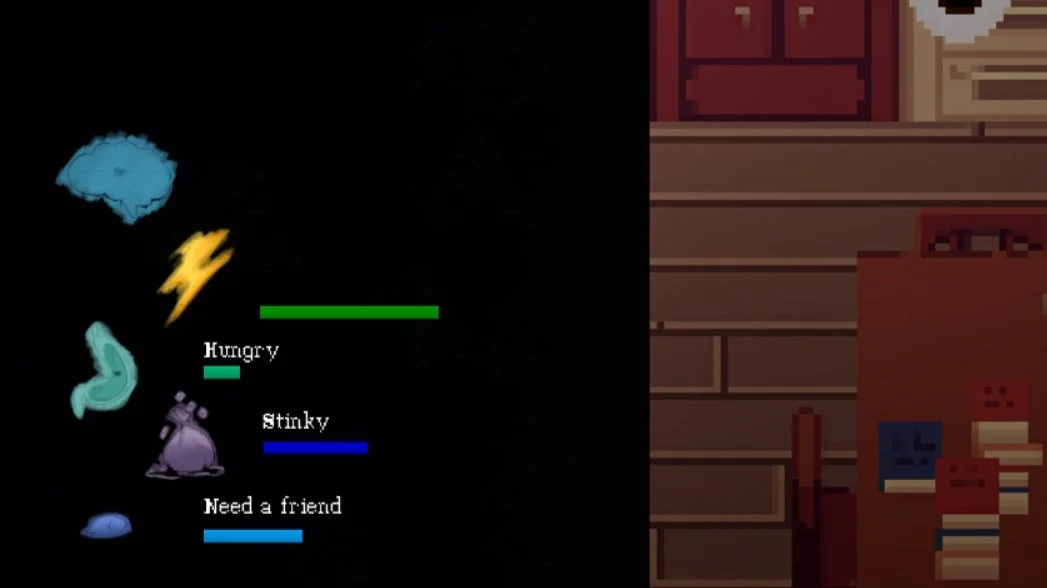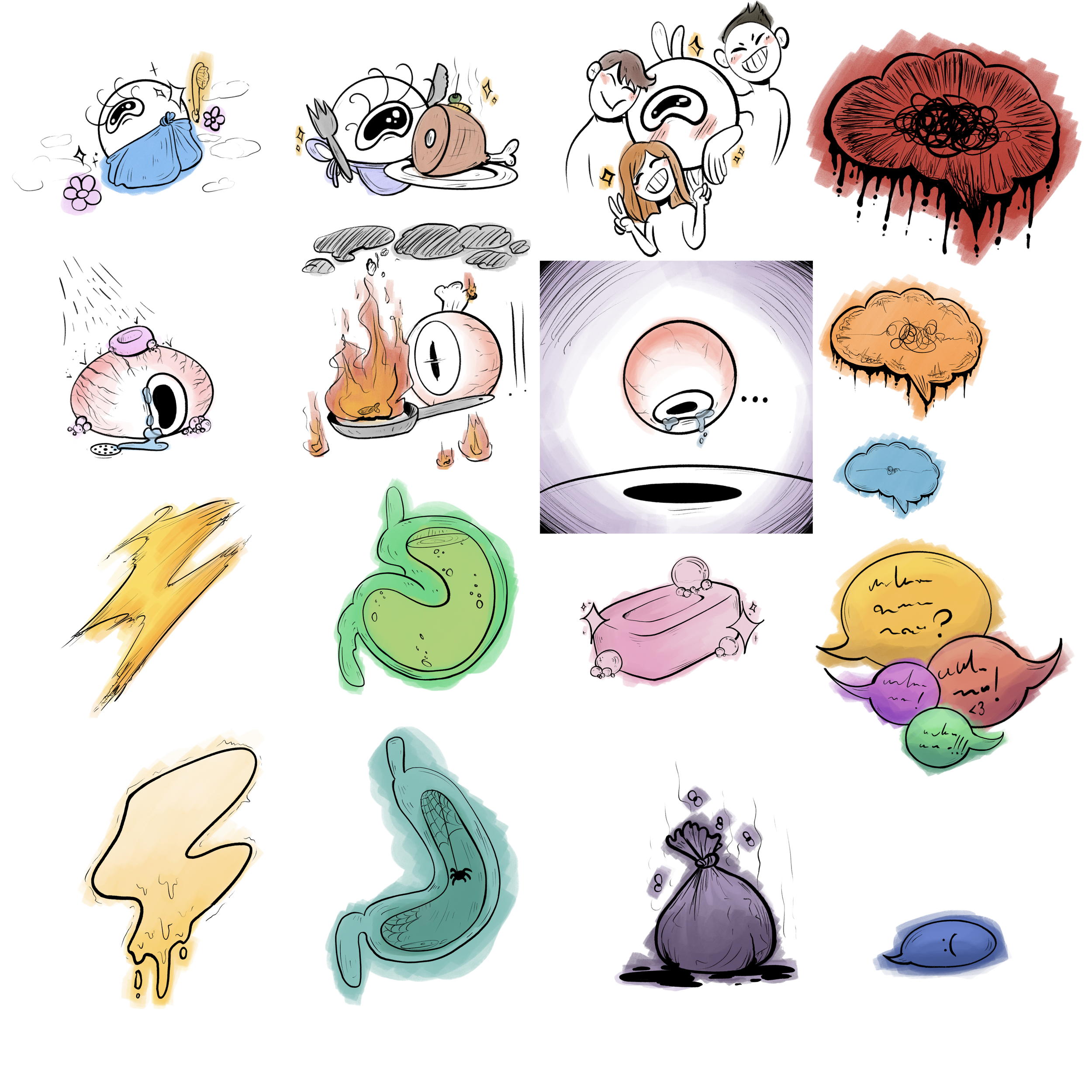Eye Never Stop
2025
Summary
Eye Never Stop is an Art game about anxiety and the passage of time. The player controls a floating anxious eye that must go through basic daily tasks like eating, showring, or going out with friends, while also self-regulating it´s anxiety. The objective is to last an entire week on this delicate balance.
The more anxiety EYE gets, the harder doing these previously menial tasks becomes, and also makes the day go by faster and faster, making needs drain faster aswell. If anxiety hits the maximum or all needs are unmet, game over. But it´s ok, much like with real anxiety, you can always try again next week.
Engine: Unreal
Platform: PC
Role: Solo developper
EYE recharging in bed with their teddy bear
Random input combo for taking a shower
Low stats, making anxiety rise much faster!
Splashes and stat icons by KatVO
My contribution
Solo developper
For this project I had to develop an Art game over the course of 5 weeks, however, due to personal reasons, my development time was cut to only 2 weeks. Fortunately, this tight deadline proved more than enough.
I used this Art game talk about an anxiety I experience during moments of seemingly simple everyday living. Anxiety can make simple and automatic tasks become overwhelming, and make time slip by too fast, creating a cycle in wich these simple tasks go undone for an unreasonable amount of time, creating more anxiety.
To create the feeling of normal tasks becoming slowly more and more difficult with anxiety, tasks are done with a “Combo” of arrow inputs that increase in length the more anxiety there is. This creates a rush in wich the player must be succesful to raise stats, while demanding a balance to lower the anxiety.
2D on unreal engine.
As the assignment demanded the project be built on Unreal Engine, I utilized 3rd party plugins and presets to make a 2D game viable on Unreal.
The game utilizes Unreal mostly to handle lightning changes throughout the day. Even though this might be overkill for a 2D game, it creates beautiful sunset visuals and dramatic hard interior lights.
Despite being an Unreal Engine game, it is extremely optimized and lightweight, and can run on virtually any hardware.
If one thing went extremely well with Unreal, was that my familiarity with it´s node programming let me develop the game in extremely fast and in a clean, scaleable fashion. Now that the deadline is met, future content and patching can be handled very easily.
One of (suprisingly many) blueprint pages
Postmortem
What went well
The game recieved a really good reaction and interest from the public during presentations, asking for more features and content.
While completed to the project´s original vision, the game´s simple yet engaging mechanics naturally project many interesting features that could be expanded upon.
What went wrong
To focus on the more programming oriented side of the project, I had to outsource assets. While I´m completely satified with the artistic contributions made for the project, I would´ve liked to create many of these assets personally.
What I learned
I was able to put in practice many design principles I had learned for preproduction. Simple things like pseudo-programming in paper and organizing chronograms helped me work very efficiently, and kept the project´s scope clear.






